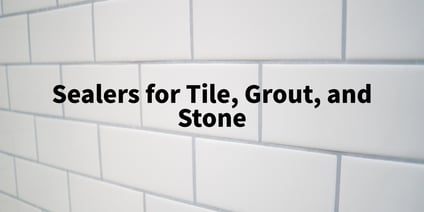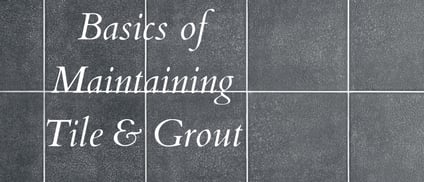10 Tips for Easy Terrazzo Floor Maintenance
A terrazzo floor that's properly maintained will last several lifetimes. Originally created in Venice, some European terrazzo floors have been around for over 500 years! While it's unlikely you're worried about that far in the future, your terrazzo floor will easily outlast you, and your children, and their children... Let's dive into some examples of terrazzo and then on to the cleaning of terrazzo.
Terrazzo flooring is a very versatile floor and can complement many different interior designs and styles. Its colors and patterns allow for very flexible designs and is thus one of only a few floors that you might find in everything from Art Deco to classical Italian designs. If you're not sure what a terrazzo floor looks like, here are some well-known examples.
Famous Terrazzo Flooring
Hollywood Walk of Fame

St. Peter's Basilica

Hoover Dam
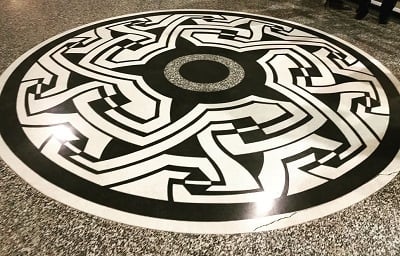
Empire State Building
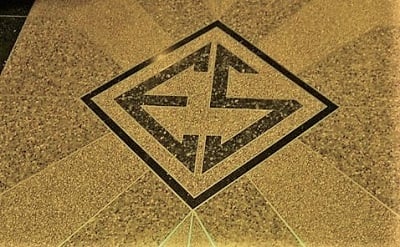
What is Terrazzo?
At a high level, terrazzo is a mix of hard 'chips' and a binder. The chips are usually a hard stone like marble. And the binder is usually a type of cement or epoxy. It is very popular in buildings that have a lot of foot traffic and need a surface that is easy to maintain. Examples include airports, municipal buildings, banks, and hospitals.
Tips for Terrazzo Maintenance:
- Dust mop your floors daily. Tracked in sand and soil will act as abrasives when walked on and will wear down your floor's shine.
- Clean your floors using a wet mop every other day with a recommended neutral cleaner designed for terrazzo flooring. You will likely need to do this daily during the winter due to the salt, mud, and snow that is tracked in. Don't use a cleaner that isn't designed for terrazzo or stone floors. A cleaner not designed for stone/concrete can be acidic and etch the surface. Many also contain chelating agents that will take the luster out of your polished floor.
- Don't allow liquid stains to sit on terrazzo for hours. Dry mop to remove as much liquid as possible and then wet mop with your normal neutral cleaner designed for terrazzo. Acidic liquids like tomato juice, orange juice, soda, etc. can leave a mark that might have to be removed via mechanical methods if left too long.
- Remove scuff marks using an autoscrubber with a white pad every 1-2 weeks depending on traffic conditions. Don't use aggressive diamond pads as they will strip away the sealer and wear the floor down. Diamond pads should only be used for restorative care. You can use a mild cleaner, or just plain water with the white pad.
- You can spray buff a floor using a white pad, rotary machine, and an approved spray buff. Follow the spray buff manufacturer's direction on how to do this.
- Joints, especially light-colored joints, can collect dirt and look worse than the surrounding terrazzo since these are sometimes the low point in the floor. If this is the case, you can use a grout brush and neutral cleaner to clean these if mopping isn't working. If you have a high-pressure portable extraction machine, or truckmount, you can use a rotary tool like the SX-15 to triple your cleaning speed.
- Strip your floors using a low-speed rotary floor machine, floor stripper, and a black pad. Make sure to remove all sealer residue.
- Seal your floors using a quality pump sprayer, microfiber pad and an acrylic (water-based) sealer. Two thin coats are better than one thick one. Let coats dry between application. You're probably going to need multiple coats for new floors. The sealer should be slip resistant and recommended for terrazzo. Underwriter's Laboratories provides safety guidelines (UK410) and recommends a minimum slip rating of 0.5.
- Don't try polishing, sealing, or doing a repair on an expensive terrazzo floor without consulting a professional. If you damage the floor, especially on older installs, it can be nearly impossible to match the exact look of the floor.
- If you need to repair newer terrazzo, the best place is to start with the contractor that installed your terrazzo. They will know what is needed to match the previous install. If that isn't an option, you can often find the standard mix needed to achieve the same look by visiting the NTMA website. They have excellent images that you can use to match epoxy and cement installations. The National Terrazzo and Mosaic Association is a great resource for all things 'terrazzo'. They provide national standards and general information about terrazzo.
Featured Products
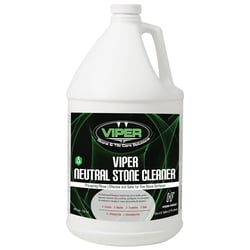
Hydro-Force, Viper Neutral Stone Cleaner, 1 Gallon
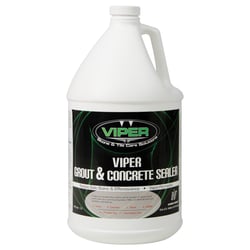
Hydro-Force, Viper Grout and Concrete Sealer, 1 Gallon
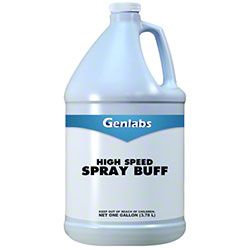
Genlabs High-Speed Spray Buff, 1 Gallon
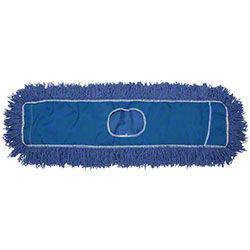
Premier, Pacific, Dust Mop - 5" x 24", Blue
Enjoyed reading this post? Read the following articles:


